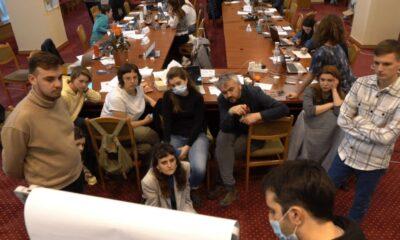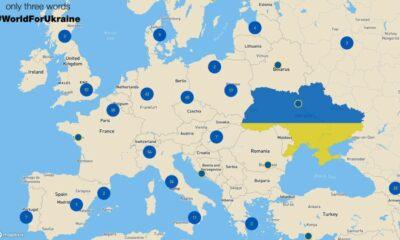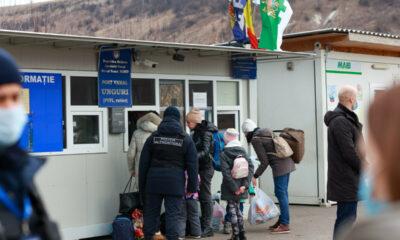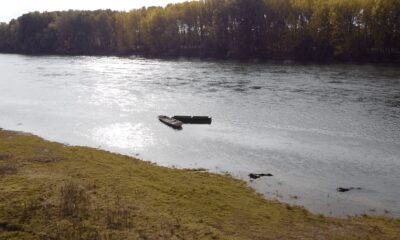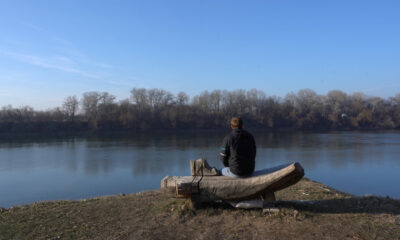Economy
Gazprom discusses Romanian participation in South Stream
Reading Time: 4 minutesGazprom playing with poor options on South Stream in the Black Sea
By Vladimir Socor
Gazprom playing with poor options on South Stream in the Black Sea
On February 17 in Bucharest, Gazprom Vice-President Aleksandr Medvedev conferred with Romanian officials on a range of bilateral projects. Medvedev hinted at possible Romanian participation in Gazprom’s South Stream pipeline project, from Russia to Europe via the Black Sea. On the previous day in Sofia, Gazprom CEO Aleksei Miller had unsuccessfully tried to “reactivate” Bulgaria’s participation in South Stream (EDM, February 18).
According to Medvedev’s concluding statement and a press release from Gazprom, the Romanian side confirmed its interest in the South Stream project and presented technical data, which Gazprom had requested earlier, toward a feasibility study for South Stream in Romania. The Russian side suggested that Romania’s state-owned gas transmission operator, Transgaz, join South Stream by entering into a joint venture with Gazprom (Interfax, February 17; Mediafax, February 18).
Those Romanian technical data pertain almost certainly to the seabed of the Black Sea in the Romanian exclusive economic zone. Gazprom had indeed requested the seabed data last year and Bucharest was slow to deliver. The Romanian Economics and Trade Ministry’s press release (February 17) listed “developing the [gas] transit network” (apparently, an allusion to South Stream) as one among the topics discussed with Medvedev. The ministry ruled out a joint venture of Romgaz (the state-owned gas producing company) with Gazprom.
Previewing the talks, Russian representatives in Bucharest told the press that Romania has good chances to be included in South Stream due to the country’s location and the unfinished negotiations between Gazprom and Bulgaria (Adevarul, February 17).
Moscow has made several overtures to Romania in this regard since fall 2009, just after the new Bulgarian government had halted its participation in South Stream for the time being and ordered a review of the project’s terms. Moscow is trying to impress Sofia that the South Stream pipeline can be routed through Romania, if Bulgaria stalls.
Gazprom’s overtures to Romania can also unsettle Turkey, if the government in Ankara truly believes South Stream to be a realistic project. Ankara has already agreed to allow the South Stream pipeline to pass from Russia through the Turkish exclusive economic zone in the Black Sea, en route to Europe. Most recently, the Russian and Turkish prime ministers signed an energy partnership agreement, enshrining the Turkish seabed route for South Stream (Interfax, Anatolia news agency, January 13). However, Gazprom’s use of the Romanian zone would rule out the use of the Turkish zone for the pipeline.
Bulgaria is the only country through which South Stream must necessarily pass in order to reach all the countries that have signed up to this project.
Theoretically, South Stream has two options for crossing the Black Sea from Russia to Bulgaria: from the Russian through the Ukrainian, Romanian, and Bulgarian exclusive economic zones, to a landfall point in Bulgaria; or through the Russian, Turkish, and Bulgarian zones, again to a Bulgarian landfall point. On the first option, Ukrainian permission seems unimaginable, as it would allow Gazprom to shift massive volumes of gas from Ukraine’s own transit pipelines into South Stream. The second option is convenient to Russia politically; but the Turkish seabed route is the longest, deepest, and the most expensive of all options.
Theoretically, Gazprom has two bypass options against Bulgaria: from the Russian via the Ukrainian and Romanian zones to a Romanian landfall, then overland into central Europe; or via the Russian and Turkish zones to a Turkish landfall, then overland into southern Europe. This would imply bifurcating the South Stream pipeline in the middle of the Black Sea, then following two circuitous routes around Bulgaria toward southern and central Europe, respectively. Russian planners can hardly consider these options seriously.
Thus, Bulgaria holds an unassailable position and its government is well positioned to bargain hard with Russia over the terms of South Stream or other energy projects.
South Stream can only reach the Romanian exclusive economic zone after crossing the Ukrainian zone in the Black Sea. Thus, Gazprom’s overture to Romania makes no practical sense, if it refers to the seabed route.
However, it is possible to speculate that Gazprom is offering to build an extension of South Stream into Romania overland, branching off from a neighboring country. In that case, Romania would not be considered a transit country for South Stream, but merely a customer country. This is the model that Moscow is currently offering to Croatia, in return for major concessions from Zagreb.
By all public evidence, Medvedev failed to mention any gas reserves that might be available in Russia or elsewhere for the South Stream pipeline. Nor did he mention financing. These omissions occur invariably when Russian government and Gazprom officials discuss the South Stream project with countries that have joined or consider joining the project.
Economics and Trade Minister Adriean Videanu led the Romanian team in these (and some previous) talks with Medvedev. The Romanians have three main objectives in these negotiations. In The goals, in chronological order, are:
1. Creating a joint venture between Romania’s state-owned gas producer Romgaz and Gazprom to build underground gas storage sites in Romania. The capacities would total 5 to 6 billion cubic meters (bcm), including one site at Margineni (northeastern Romania) for 2 or 2.5 bcm. The joint venture would market the gas in European Union member countries (Agerpres, February 17).
2. Eliminating trading companies that Gazprom has inserted in its supply relationship with Romania. The existing supply contracts expire in 2012, at which point Romania wants the two intermediaries, WIIE and Imex Oil, removed, and new contracts signed with Gazprom directly. Medvedev showed some receptiveness to this proposal (Interfax, February 17; Mediafax, February 18).
3. Negotiating the prolongation of transit agreements for Russian gas via Romania en route to Bulgaria, Greece, and Turkey. The transit agreements between Gazprom and Transgaz expire in 2011. Bucharest is now well placed to demand an increase in the transit fees, as Bulgaria demands and Ukraine has, as of January 2010, obtained (EDM, February 18).
One day ahead of Medvedev’s visit, and apparently timed to it, Romania’s Chamber of Deputies (lower house of parliament) ratified the inter-governmental agreement on the Nabucco project.
Economy
Moldova will receive a disbursement of 36 million euros as part of the the Economic Recovery Plan
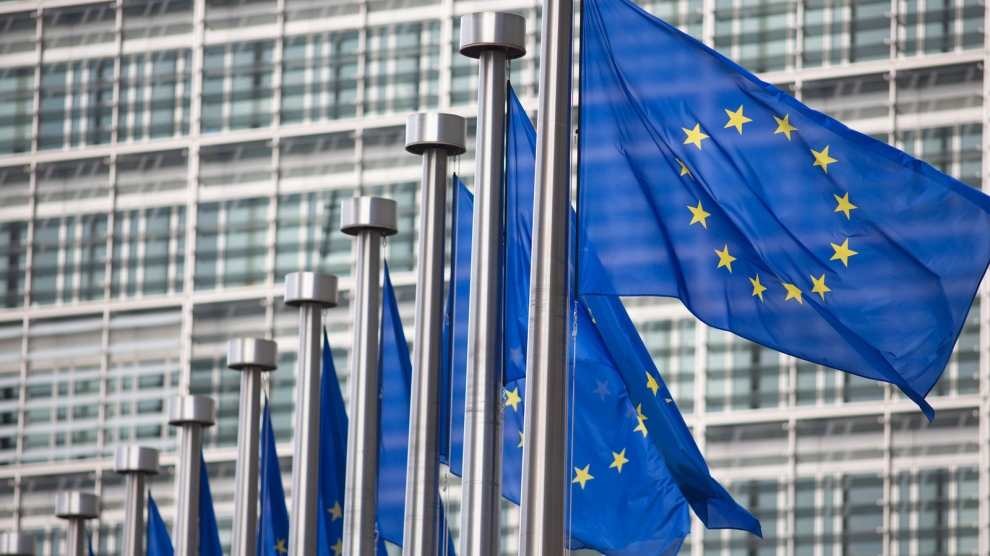
This week, the European Commission approved the disbursement of 36 million euros in grant money for the Republic of Moldova. The announcement was made by Deputy Director-General for Neighbourhood Policy and Enlargement Negotiations at the European Commission, Katarina Mathernova, who paid an official visit to the Republic of Moldova between September 13-15, together with Managing Director for Russia, Eastern Partnership, Central Asia, Regional cooperation and OSCE, at the European External Action Service, Michael Siebert.
The EU officials had meetings with President Maia Sandu, Minister of Foreign Affairs and European Integration, Nicu Popescu, Speaker of Parliament, Igor Grosu, Prime Minister of the country, Natalia Gavrilita, as well as key representatives of Government, international financial institutions and the civil society, according to a press release issued by the Delegation of the European Union to the Republic of Moldova.
Beside such topics as the EU-Moldova relations and prospects, the priorities of the reform agenda of the new Moldovan Government, preparations for the Eastern Partnership Summit at the end of the year and the Transnistrian conflict settlement, the officials also discussed the EU assistance in support of reforms and the Economic Recovery Plan for Moldova, which was announced in June with a total EU support of 600 million euros over the next 3 years.
“The first measures under the Economic Recovery Plan will shortly materialize, with the expected disbursement of 36 million euros in grant money under budget support programmes to support the authorities’ efforts to fight against the consequences of the pandemic. Moldova can count on EU’s assistance on its path to reforms and to recovery, bringing tangible results to citizens,” Katarina Mathernova stated.
The plan is based on assistance provided by the European Union through various bilateral and regional instruments, aiming to mobilize the funds in the form of grants, loans, guarantees and macro-financial assistance.
“The Economic Recovery Plan for the Republic of Moldova involves much more, not just this financial support provided immediately. It must help digital transformation, strengthen infrastructure, energy efficiency, education and support small and medium-sized enterprises,” the EU official also said.
As Prime Minister Natalia Gavrilita informed, “The Economic Recovery Plan and the 5 flagship initiatives for Moldova in the Eastern Partnership will directly contribute to the reform and consolidation of institutions, stimulate long-term socio-economic development, bring direct benefits to citizens, and unleash new economic opportunities through promoting the green agenda and digitization. Small and medium-sized enterprises (SMEs) have been hit hard by the crisis. Promoting and diversifying access to finance and reducing collateral requirements will be essential in supporting economic operators. We are grateful to the EU partners who will launch two programs to support 50 000 independent Moldovan SMEs to adapt to the new conditions.”
President of the Republic of Moldova, Maia Sandu, welcomed the decision of the European Union to disburse about 745 million lei in grant money, as the official page of the President’s Office announced. “EU support comes after a long period of freezing of European assistance, caused by former governments. We managed to relaunch the political dialogue with the European Union and resume financial assistance. The Republic of Moldova is gradually regaining the trust of its strategic partners. This European support is also a signal of encouragement for the new Government team in its commitment to clean up the institutions, fight corruption and launch development programs in the country,” said Maia Sandu.
Photo: unknown
Economy
Romania and Moldova signed a partnership memorandum pledging to cooperate in promoting their wines

The Chamber of Commerce and Industry of Romania (CCIR) and the National Office for Vine and Wine (NOVW) of the Republic of Moldova signed, last week, a memorandum of cooperation on organizing joint promotional activities in the markets of common interest, as the CCIR announced.
China, Japan or the USA are just some of the markets targeted by the Romanian and Moldovan institutions. The memorandum also involves advertising activities for wines from common indigenous varieties, promoting the oeno-tourist region, developing a tourist route in the two states, exchange of experience, study visits, and mutual support in identifying new export opportunities. “We are very confident that this collaboration between our organizations will lead to sustainable economic growth and a higher degree of well-being among Moldovans and Romanians,” claimed Deputy Secretary-General of CCIR, Bogdan Visan.
On the other hand, Director of the NOVW, Cristina Frolov, declared that no open competition with Romania is aimed at the governmental level of the Republic of Moldova. “This request for collaboration is a consequence of the partnership principle. Romania imports 10-12% of the wine it consumes, and we want to take more from this import quota. Every year, the Romanian market grows by approximately 2.8%, as it happened in 2020, and we are interested in taking a maximum share of this percentage of imported wines without entering into direct competition with the Romanian producer,” the Moldovan official said. She also mentioned that Moldova aims at increasing the market share of wine production by at least 50% compared to 2020, and the number of producers present on the Romanian market – by at least 40%.
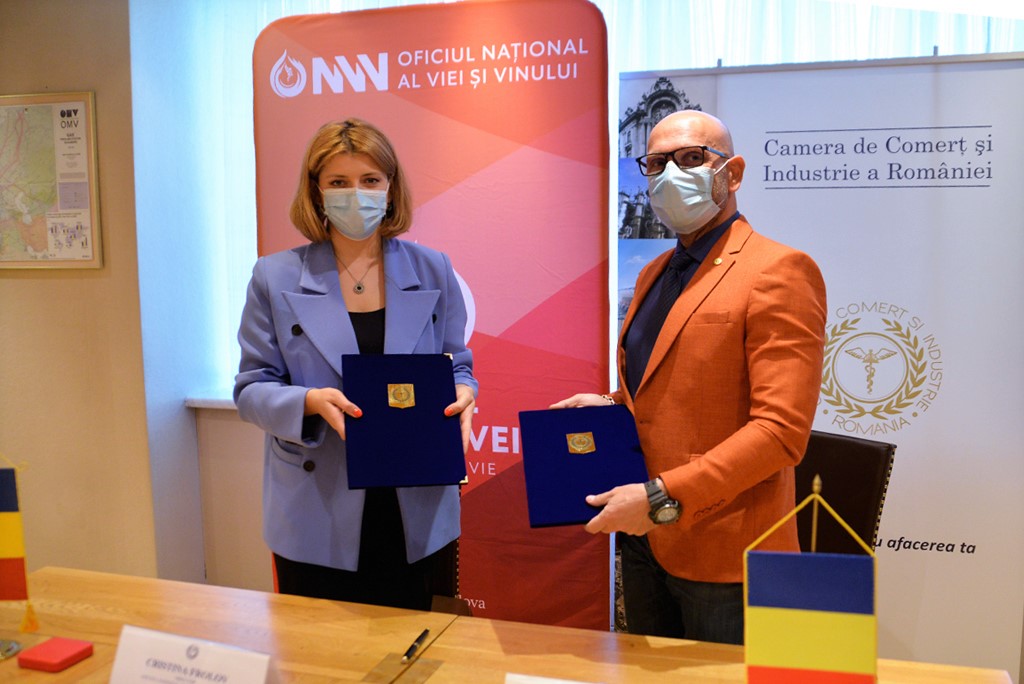
Source: ccir.ro
**
According to the data of the Romanian National Trade Register Office, the total value of Romania-Moldova trade was 1.7 billion euros at the end of last year and over 805 million euros at the end of May 2021. In July 2021, there were 6 522 companies from the Republic of Moldova in Romania, with a total capital value of 45.9 million euros.
The data of Moldova’s National Office of Vine and Wine showed that, in the first 7 months of 2021, the total quantity of bottled wine was about 27 million litres (registering an increase of 10% as compared to the same period last year), with a value of more than one billion lei, which is 32% more than the same period last year. Moldovan wines were awarded 956 medals at 32 international competitions in 2020.
Photo: ccir.ro
Economy
Moldova’s hope to be a top walnut exporter and its main difficulties
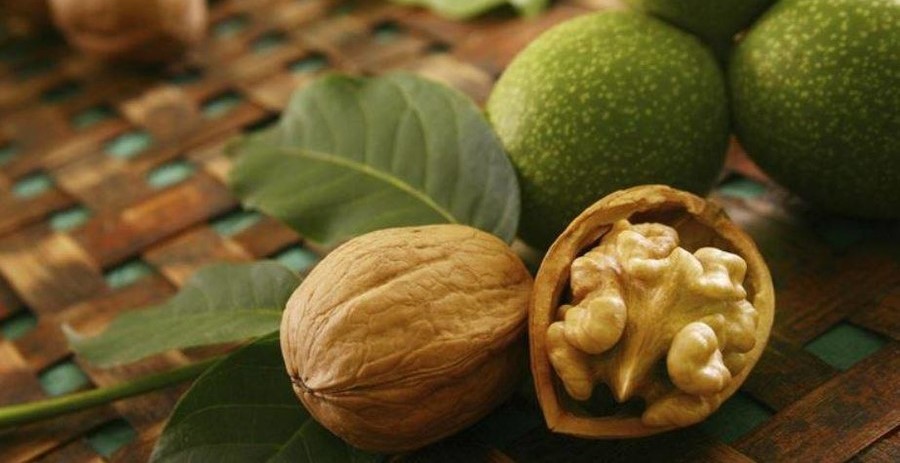
The Republic of Moldova has perfect weather conditions for growing walnut trees, that creating a great potential of walnut production and trade, especially on international markets, where the demand is way higher than the product’s supply. National and international experts believe that the country’s walnut production industry is on the verge of important transformations, which could lead to increased yields, quality and competitiveness worldwide.
According to authorities, Moldova exports 34-35 thousand tons of walnuts in shell, which is about 7% of the total export of fruit and 5% of the total export of horticultural products. The export value is assessed as being $120 million, that being 57-60% of the total fruit export value and about 50% of horticultural export value. Most of walnut crops are exported to the EU countries, such as France, Germany, the Netherlands, Romania and Austria. The country’s exports were among the world’s top 10 when it comes to the highest dollar value of the product during 2020.
Viorel Gherciu, Minister of Agriculture and Food Industry, pointed out that the production in the domestic walnut industry has increased by 55% in the last five years, which ranks Moldova among the main producers in the world.
“The biggest opportunity for this industry is that we are in the geographical proximity of the largest walnut import area in the world, which is the European Union, with almost 40% of total imports in the world. We are on the EU border, with privileged relations, with an Association Agreement. We already enjoy a good relationship in working with European importers, they trust our processors. A very close collaboration has been created and this is, in fact, the guarantee for those who invest in the area,” claimed the president of the Walnut Producers Association, Oleg Tirsina.
The data provided by the National Bureau of Statistics show that there are 34.7 thousand hectares of walnut plantations in the country. 20.90 hectares are represented by orchards. 75% of planted orchards are formed of old varieties trees. 30-35% of the exported production comes from orchards, the rest comes from individual farmers and plantations along the roads. This means that the quality of walnut production is not at its maximum potential. Developing commercial plantations through orchards modernization and extension of walnut varieties would provide double yield and better quality, experts say.
Governmental support in the form of subsidizing solutions, foreign investments and credit options are indispensable for the industry development. One of the financing options is the credit line of the European Investment Bank Project. Since 2016, 15 producers and processors of nuts, almonds and hazelnuts have benefited from these loans with the total amount of investments worth 8.7 million euros. A further extension of the project would provide another 60 million euros for the modernization of the horticultural sector in general and for harvesting organic walnuts in particular.
Photo: heymoldova.com


